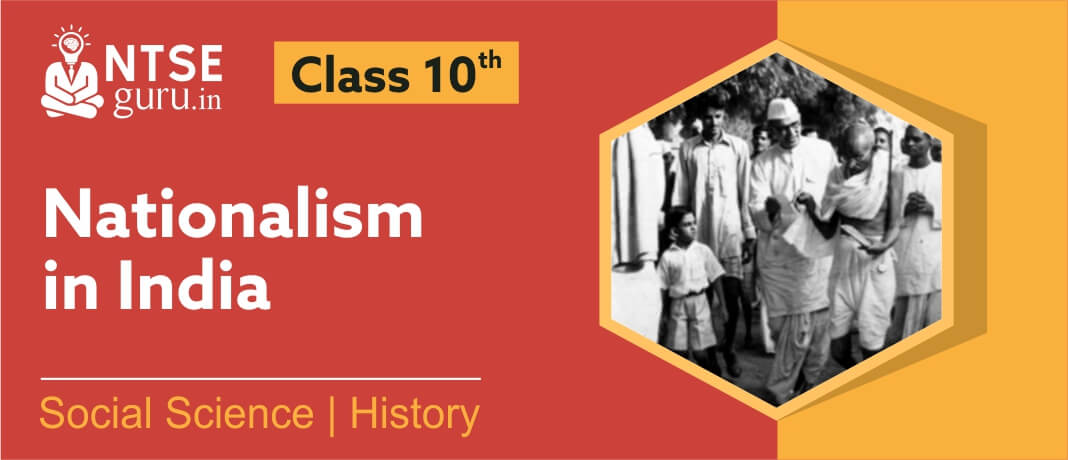Power Sharing Class 10 CBSE Civics Chapter 1
Power Sharing class 10 CBSE is Chapter 1 is of your Civics book Democratic Politics II. Vipin Sir has explained the c...


Therefore, you learn the chapter inside out as soon as you have watched the video lectures. Vipin Sir has vast experience of teaching Class 10 and you will be benefited greatly by his unique style of teaching. Do watch the video and get ready for the exams. This is our way to wish you best of luck for your exams!
1. How did the First World War impact the social, political and economic life in India?
Ans. The war created a new political and economic situation.
1. It led to huge increase in defense expenditure which was financed by war loans and increasing taxes.
2. Through the war years prices increased, doubling between 1913 and 1918,leading to extreme hardship for common people.
3. Villages were called upon to supply soldiers and the forced recruitment in rural areas caused widespread anger.
4. In 1918-1920 and 1920-21, crops failed in many parts of India resulting in acute shortages of food. This was accompanied by influenza epidemic.
2. Discuss the satyagraha movements launched by Gandhiji after arriving in India.
Ans. 1. In 1916 Gandhiji travelled to Champaran in Bihar to inspire the peasants to struggle against the oppressive plantation system.
2. In 1917,he organized a satyagraha to support the peasants of Kheda district of Gujarat. Affected by crop failure and a plague epidemic, the peasants of Kheda could not pay the revenue and were demanding that the revenue collection be relaxed.
3. In 1918, Gandhiji went to Ahmadabad to organize a satyagraha movement amongst cotton mill workers.
3. Why did Mahatma Gandhiji decide to withdraw the Non Cooperation Movement?
Ans. In February 1922, Mahatma Gandhiji decided to withdraw the Non-Cooperation Movement. He felt the movement was turning violent in many places and satyagrahis needed to be properly trained before they would be ready for mass struggles.
Chauri Chaura, 1922
At Chauri Chaura in Gorakhpur, a peaceful demonstration in a bazaar turned into a violent clash with the police. In this 22 police men were burnt a life. Gandhiji was very sad with this. Hearing of the incident, Mahatma Gandhiji called a halt to the Non-Cooperation Movement.
4. Why did Mahatma Gandhiji decided to launch the Salt March?
Ans. 1. Mahatma Gandhiji found in salt a powerful symbol that could unite the nation. On 31 January 1930, he sent a letter to Viceroy Irwin stating eleven demands.
2. The most stirring of all was the demand to abolish the salt tax. Salt was something consumed by the rich and the poor alike, and it was one of the most essential items of food. The tax on salt and the government monopoly over its production, Mahatma Gandhiji declared, revealed the most oppressive face of British rule.
3. Mahatma Gandhiji started his famous salt march accompanied by 78 of his trusted volunteers. The march was over 240 miles, from Gandhiji’s ashram in Sabarmati to the Gujarati coastal town of Dandi.
5. Discuss the growth and progress of the Civil Disobedience Movement in the countryside.
Ans. 1. In countryside, rich peasant communities like the Patidars of Gujarat and the Jats of Uttar Pradesh were active in the movement.
2. Being producers of commercial crops, they were very hard hit by the trade depression and falling prices. As their cash income disappeared, they found it impossible to pay the government’s revenue demand. And the refusal of the government to reduce the revenue demand led to widespread resentment.
3. These rich peasants became enthusiastic supporters of the Civil Disobedience Movement, organising their communities, and at times forcing reluctant members, to participate in the boycott programmes.
4. For them the fight for swaraj was a struggle against high revenues. But they were deeply disappointed when the movement was called off in 1931 without the revenue rates being revised.
Power Sharing Class 10 CBSE Civics Chapter 1
Power Sharing class 10 CBSE is Chapter 1 is of your Civics book Democratic Politics II. Vipin Sir has explained the c...
The Making Of The Global World Class 10
The Making of a Global World is Chapter 4 of Class 10 History book – India and the Contemporary World II. Our video ...
The Age Of Industrialization Class 10
The Age of Industrialization Is Chapter 4 of Class 10 History Book – India and the Contemporary World II. Our v...